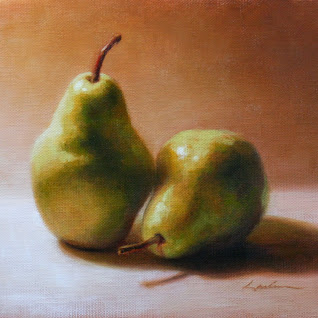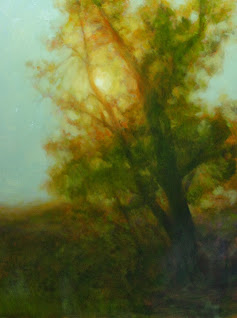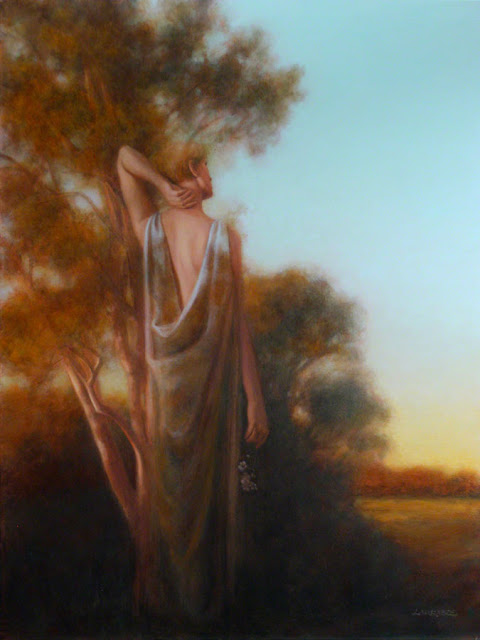by Lisa Larrabee
I have typically shared my painting stages as an overview upon completing a piece. Instead, I am going to share my process while I am in the midst of creating my current painting, Fleeting.
The inspiration for this piece is the Eucalyptus across the street from my house. I loved the color of the light hitting the leaves and the pale bark of the branches. I stepped out my front door and took some photos for future reference.
I began by creating a small (14" x 11") color study of the Eucalyptus to work out colors and techniques that I wanted to use on the figurative landscape. I hope to keep the warmth and softness of the study on a larger scale.
I knew that I wanted to use loose draping fabric and bring up an arm (or arms) to create repetition with the branches. Once I had shot some photographs, this pose jumped out at me and altered the overall direction I had intended for the piece. The narrative began unfolding and I had to shift focus to the right. After composing and editing in Photoshop, I was ready to proceed. I used a sepia hard pastel pencil to draw directly onto my toned panel.
















































